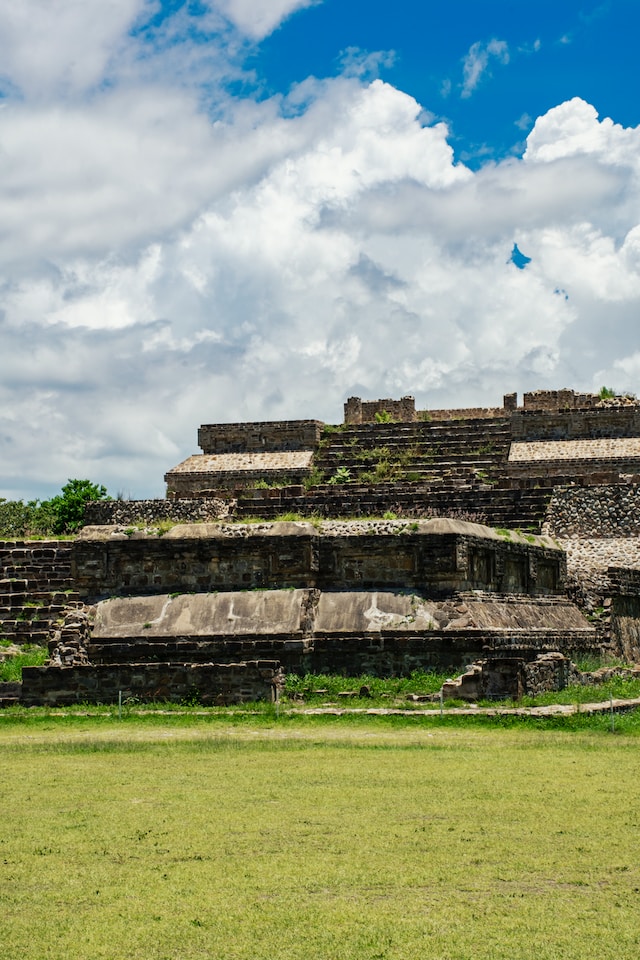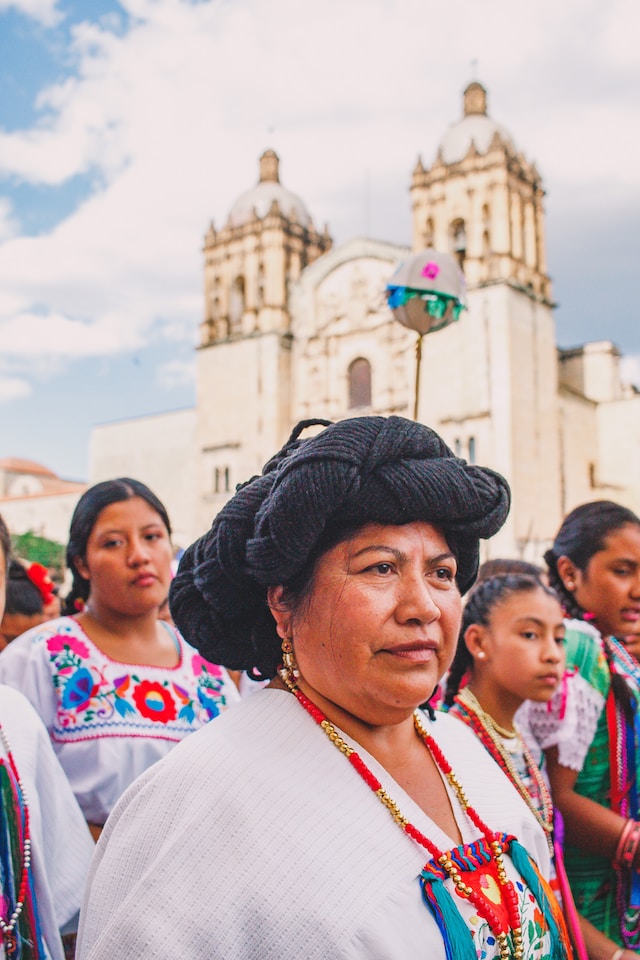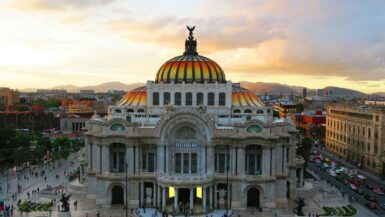Hello, fellow travel enthusiasts! Are you ready for an adventure that will leave you mesmerized by the rich tapestry of culture, history, and food? Well, pack your bags and join me as we embark on a thrilling journey through Oaxaca, Mexico. In this blog post, I will share with you some of the most captivating things to do in Oaxaca, along with my personal recommendations on where to visit in this vibrant city.

Immerse Yourself in the Historic Center
When you arrive in Oaxaca, the first place you should set foot in is the historic center. This UNESCO World Heritage site is a treasure trove of colonial architecture, vibrant plazas, and bustling markets. Here are a few must-visit spots:
- Zócalo: The heart of the city, the Zócalo is a central square brimming with life. Enjoy the lively atmosphere, visit the stunning Oaxaca Cathedral, and take a moment to people-watch while sipping on a refreshing agua fresca.
- Mercado Benito Juárez: Indulge your senses in this bustling market, filled to the brim with colorful fruits, aromatic spices, and local handicrafts. Don’t miss the chance to taste traditional Oaxacan delicacies like tlayudas and mole.

Discover Ancient Ruins and Archaeological Sites
Oaxaca’s rich history dates back centuries, and exploring its ancient ruins is like stepping into a time machine. Here are a couple of archaeological sites that will transport you to the past:
- Monte Albán: A short trip from the city will take you to Monte Albán, an awe-inspiring ancient city that was once the political and economic hub of the region. Marvel at the grand pyramids, intricate stone carvings, and expansive views of the Oaxaca Valley.
- Mitla: Known as the City of the Dead, Mitla is a lesser-known gem with exquisite mosaic fretwork adorning its temples. Take a moment to appreciate the intricate designs and the sense of mystery that surrounds this sacred site.
Best Things to do in Oaxaca for Food

If there’s one thing you shouldn’t miss in Oaxaca, it’s the food. The region’s culinary traditions are renowned worldwide, and every bite is a delightful journey of flavors. Here are a few culinary experiences to tantalize your taste buds:
- Mole Tasting: Delight in the complex flavors of Oaxaca’s famous mole sauce. From rich and chocolaty to spicy and smoky, each variation is a treat for the senses. Try it at La Olla for an authentic experience.
- Traditional Cooking Classes: Embark on a culinary adventure and immerse yourself in the vibrant flavors of Oaxaca by taking cooking classes that will transport your taste buds to a whole new world of Mexican cuisine.
- Mezcal Tasting: Dive into the world of mezcal, Oaxaca’s signature spirit. Visit Mezcaloteca to learn about the different varieties and techniques while enjoying tastings that reveal the nuances of this smoky elixir. Organic Mezcal Tours & Tastings.
Art and Crafts in Oaxaca
Oaxaca is a haven for artists and artisans, and the city’s vibrant art scene is a testament to its creative spirit. Here are a couple of places where you can immerse yourself in the world of Oaxacan art:
- Oaxaca Textile Museum: Admire the intricate weavings and vibrant textiles that showcase the region’s indigenous heritage. Learn about the traditional techniques passed down through generations and the stories woven into each piece.
- Alebrijes Workshop: These whimsical and colorful sculptures have become an iconic symbol of Oaxaca. Visit a workshop to witness the intricate carving and painting process, and perhaps even try your hand at creating your own alebrije.

Explore the Surrounding Oaxaca Area
Beyond the city limits, Oaxaca offers breathtaking natural landscapes that will leave you in awe. Here’s a suggestion for a day trip to experience the region’s natural beauty:
- Hierve el Agua: Discover a natural wonder unlike any other at Hierve el Agua, a set of stunning petrified waterfalls. Take a dip in the mineral-rich springs and soak up the panoramic views of the surrounding mountains and valleys.
- Find a guided tour for Hierve el Agua.
Where to Stay in Oaxaca
Oaxaca offers a variety of accommodation options in different neighborhoods, catering to various budgets and preferences. Here are some recommendations separated by neighborhood and categorized as budget, midrange, or luxury options:
Historic Center

- Budget: Hostel Central – Located in the Centro Historico neighborhood, the heart of Oaxaca City, it is conveniently situated near numerous attractions like the Oaxaca Cathedral, the Zocalo, and the Monte Alban archaeological site, and offers various amenities including a shared kitchen, a rooftop terrace, and a laundry service, making it an excellent choice for budget travelers seeking a centrally located hub with access to Oaxaca’s finest offerings.
- Midrange: Casa de Sierra Azul – This boutique hotel blends colonial charm with modern amenities. Enjoy spacious rooms, a beautiful courtyard, and a rooftop terrace, all within walking distance of the main attractions.
- Luxury: Quinta Real Oaxaca – Housed in a former convent, this luxury hotel provides an elegant and tranquil retreat. Indulge in upscale amenities, stunning courtyards, and exceptional service in the heart of the city.

Reforma Neighborhood
- Budget: Hotel Aitana. This budget-friendly hotel offers clean and comfortable rooms with a central location. It’s an ideal choice for those seeking affordability without compromising on convenience.
- Midrange: Hotel Parador San Agustín. With its colonial-style architecture and tastefully decorated rooms, this midrange hotel provides a charming and comfortable stay. It also features a lovely courtyard and a rooftop terrace.
- Luxury: Hotel Casa Oaxaca. This upscale boutique hotel showcases contemporary design and impeccable service. Enjoy luxurious amenities, an exquisite restaurant, and a tranquil ambiance in this elegant property.
Jalatlaco Neighborhood
- Budget: Posada Don Mario. Located in the charming neighborhood of Jalatlaco, this budget-friendly guesthouse offers comfortable rooms and a warm atmosphere. It’s a great choice for travelers looking to experience a more local and laid-back vibe.
- Midrange: Hotel Casa de Adobe. Nestled in a restored colonial house, this midrange hotel offers comfortable rooms with traditional Oaxacan decor. The peaceful courtyard and friendly staff make for a delightful stay.
- Luxury: Hotel Casa Catrina. This boutique hotel combines modern amenities with traditional touches. Enjoy spacious and beautifully designed rooms, a rooftop pool, and panoramic views of the city.
Whether you’re on a budget, seeking a comfortable midrange option, or looking to indulge in luxury accommodations, Oaxaca has something to offer in each neighborhood. Consider your preferences and choose the area and hotel/hostel that best suits your travel style and budget.
Pronunciation of Oaxaca
The History of the Name Oaxaca
The name “Oaxaca” traces its origins back to the indigenous Zapotec people who have inhabited the region for centuries. The word itself is derived from the Zapotec language, which was historically pronounced as “waːˈhaːka.” The Spanish conquistadors, upon encountering this name, adapted it to their phonetic system, resulting in the current spelling “Oaxaca.” While the written form might have undergone changes, the essence of its pronunciation has remained relatively faithful to its indigenous roots.
The Pronunciation of Oaxaca:
Pronouncing “Oaxaca” correctly is a delightful journey through phonetics. The key lies in embracing the sounds of each letter and syllable. Let’s break it down:
- O – Begin with a relaxed “o” sound, similar to the English word “awe.”
- a – Move on to a clear and crisp “a” sound, as in the word “father.”
- xa – Now, here’s the twist! The “x” in Zapotec is pronounced as a guttural sound, resembling the Scottish “loch.” Follow it with a short “a” sound.
- ca – Finally, wrap it up with a gentle “ca” sound, akin to “ka.”
So, my fellow travelers, pack your sense of adventure and get ready to be captivated by the enchanting city of Oaxaca. With its rich culture, ancient ruins, mouthwatering cuisine, and awe-inspiring natural beauty, Oaxaca truly offers something for everyone. Let this guide be your companion as you explore the many things to do in Oaxaca and discover the hidden gems that make Mexico a cultural haven.
¡Buen viaje! (Have a great trip!)
FAQ: Frequently Asked Questions: Things to do in Oaxaca
Oaxaca is best known for its vibrant indigenous culture, rich culinary traditions, and stunning natural landscapes. The city of Oaxaca is recognized as a UNESCO World Heritage site, primarily for its well-preserved colonial architecture and historical significance. The region is also famous for its intricate and colorful handicrafts, such as textiles, pottery, and alebrijes (fantastical wooden sculptures). Moreover, Oaxaca’s cuisine, which includes mole, tlayudas, and mezcal, is highly regarded both nationally and internationally.
The number of days needed to explore Oaxaca depends on the depth of your desired experience and the specific places you wish to visit. However, to get a good overview of the city and its surroundings, a minimum of 3 to 4 days is generally recommended. This timeframe allows visitors to explore the city’s historic center, visit important sites such as Monte Albán and Hierve el Agua, immerse themselves in local culture and cuisine, and potentially take part in day trips to nearby attractions, such as the artisan villages of Oaxaca’s Central Valley.
There are several must-visit places in Oaxaca. The historic center, including the Zócalo and Mercado Benito Juárez, is a great starting point. Additionally, don’t miss the ancient ruins of Monte Albán and Mitla, where you can immerse yourself in the region’s rich history.
Oaxaca is renowned for its culinary traditions. The region is famous for its mole, a complex sauce made with chilies, spices, and chocolate. Mezcal, a smoky spirit made from the agave plant, is another specialty. Make sure to taste these unique flavors during your visit.
Absolutely! Oaxaca is a cultural hub with a vibrant art scene. Visit the Oaxaca Textile Museum to admire indigenous weavings or explore an alebrijes workshop to witness the creation of these whimsical sculptures. You can also immerse yourself in the local culture by attending traditional festivals and events.
One popular day trip is to Hierve el Agua, where you can witness the breathtaking petrified waterfalls and enjoy the mineral-rich springs. Another option is to visit nearby villages known for their crafts, such as San Bartolo Coyotepec, famous for its black pottery, or Teotitlán del Valle, renowned for its beautiful woven rugs.
Yes, Oaxaca is a relatively small city, and many of the main attractions are within walking distance of the historic center. Taxis and local buses are also readily available for longer journeys or day trips to nearby sites.
Absolutely! Oaxaca offers a wide range of accommodation options to suit different budgets. From budget-friendly hostels and guesthouses to boutique hotels and luxury resorts, you’ll find something that fits your preferences and budget.
Oaxaca is generally considered safe for travelers. However, like any destination, it’s important to take common-sense precautions. Be aware of your surroundings, keep your belongings secure, and follow any local safety recommendations. It’s always a good idea to check the latest travel advisories before your trip.
es, many guides and tour operators in Oaxaca offer services in English. Whether you prefer a guided tour of the city, a culinary adventure, or a visit to archaeological sites, you’ll find English-speaking guides who can enhance your experience and provide valuable insights.
Oaxaca enjoys a pleasant climate throughout the year. The dry season, from November to April, is generally considered the best time to visit, as the weather is mild and there are fewer crowds. However, Oaxaca’s festivals, such as the Day of the Dead celebrations in late October and early November, offer a unique cultural experience if you don’t mind larger crowds.
Oaxaca has a rich cultural heritage, and it’s always respectful to learn and observe local customs. For example, it’s polite to greet
If you have 4 days to spend in Oaxaca, here is a suggested itinerary:
Day 1: Explore Oaxaca City
Begin by exploring the historic center, visiting landmarks like the Santo Domingo Church and Museum.
Wander through the vibrant markets, such as Mercado Benito Juárez and Mercado 20 de Noviembre.
Sample local cuisine, including traditional Oaxacan dishes like tlayudas and mezcal.
Day 2: Day Trip to Monte Albán and nearby villages
Take a day trip to Monte Albán, a UNESCO World Heritage site and ancient Zapotec archaeological site.
Visit nearby villages like Arrazola (known for its whimsical alebrijes) or Cuilapam de Guerrero (with its impressive monastery).
Day 3: Explore the Central Valley
Explore the artisan villages in Oaxaca’s Central Valley, such as Teotitlán del Valle (known for its textiles) and Mitla (with its intricate Zapotec ruins).
Visit a mezcal distillery to learn about the production process and sample different varieties.
Day 4: Hierve el Agua and surrounding attractions
Take a trip to Hierve el Agua, a natural rock formation with petrified waterfall-like structures and mineral pools.
Visit the archaeological site of Mitla, known for its unique geometric designs.
While 4 days in Oaxaca allows for a fulfilling experience, it may not be sufficient to explore every attraction in the region. However, with proper planning and prioritization, you can make the most of your time. Focus on key highlights such as Oaxaca City, Monte Albán, artisan villages, and Hierve el Agua. Keep in mind that Oaxaca has much more to offer, and if you have the opportunity to extend your stay, you can delve deeper into the region’s cultural and natural treasures.
In conclusion, Oaxaca, Mexico, is a destination that offers a wealth of cultural, historical, and natural attractions. Whether you’re interested in exploring ancient ruins, trying delicious cuisine, or immersing yourself in the local art scene, there is something for everyone in this vibrant city. So pack your bags and get ready to experience all that Oaxaca has to offer!




